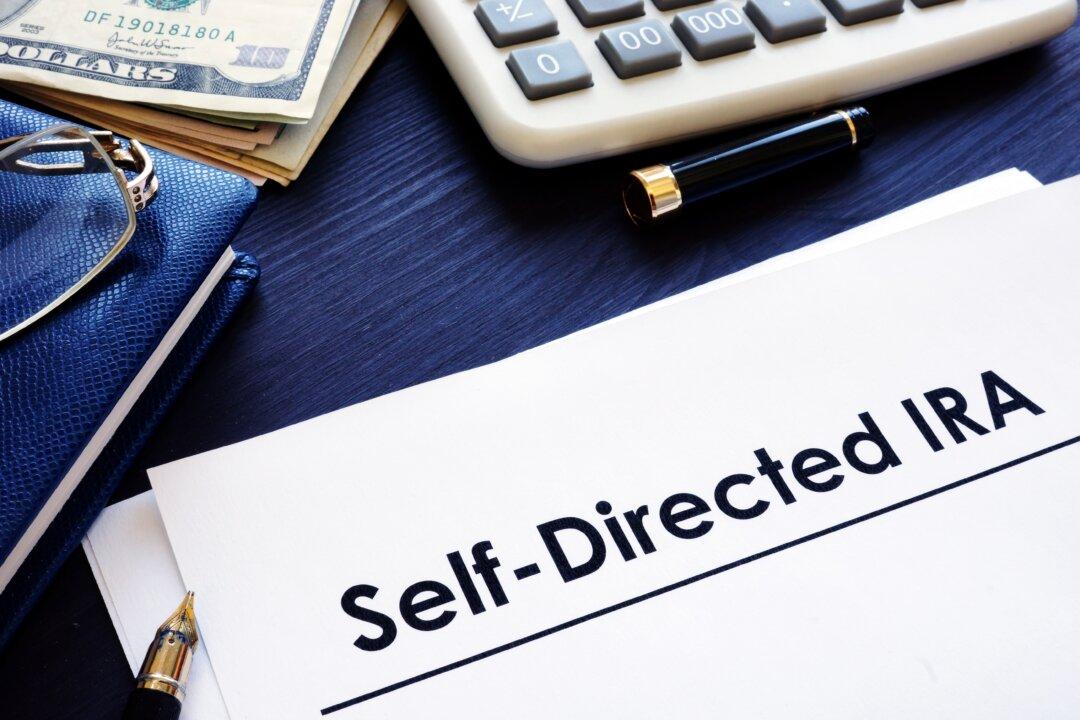By David Rodeck
From Kiplinger’s Personal Finance
Self-directed individual retirement accounts (IRAs) are not for the average retiree or the faint of heart. These specialized retirement accounts let investors do things they can’t in an ordinary IRA, like invest directly in alternative assets, including cryptocurrencies, real estate, or a private business.
Like ordinary IRAs, assets grow tax-sheltered inside a self-directed account, giving a real estate investor, for example, a way to rent properties or buy and sell them using IRA savings while postponing the taxes on any income or capital gains.
This freedom, however, means more ways for retirees to land in trouble with their hard-earned savings by investing in something that isn’t remotely suitable. Consider these risks:
You’re Not as Diversified as You Think
Alternative assets are often touted as a way to diversify your portfolio because they don’t move in lockstep with stocks or bonds, but many alternative assets, like cryptocurrency, are inherently high risk. What’s more, buying some alternative assets directly often requires a sizable chunk of your savings. Sinking a lot of money into one investment is the opposite of diversification.You Get No Guidance
Self-directed IRA custodians don’t give investment advice.As part of their contracts, self-directed IRA custodians only agree to handle the administrative work for your account. It’s up to you to make sure the investments are appropriate, safe, and legitimate, but that won’t be easy to do.
There’s Potential for Fraud
Not only can the investments themselves be opaque, but the Securities and Exchange Commission warns that criminals prey on those with self-directed IRAs or encourage people to set one up in order to sell them a fraudulent investment.You’ll Pay Hefty Fees
Self-directed IRAs aren’t cheap. Along with transaction fees, the IRA custodian can also charge an account setup fee, an annual fee, and a fee per asset held in your account. These fees range from several hundred to several thousand dollars per year, depending on the account size, the number of investments made, and the IRA custodian. The same investments made outside of a retirement account wouldn’t have any of these extra fees.RMDs Still Apply
As self-directed IRAs are retirement plans, you’ll still need to take required minimum distributions once you turn 72. That can be tricky to do if you’re investing in assets that aren’t easily cashed in, although there is a Roth IRA version of a self-directed IRA. Like ordinary Roth IRAs, the self-directed version is funded with post-tax dollars for tax-free withdrawals in retirement and has no RMDs.©2024 The Kiplinger Washington Editors, Inc. Distributed by Tribune Content Agency, LLC.
The Epoch Times copyright © 2024. The views and opinions expressed are those of the authors. They are meant for general informational purposes only and should not be construed or interpreted as a recommendation or solicitation. The Epoch Times does not provide investment, tax, legal, financial planning, estate planning, or any other personal finance advice. The Epoch Times holds no liability for the accuracy or timeliness of the information provided.








